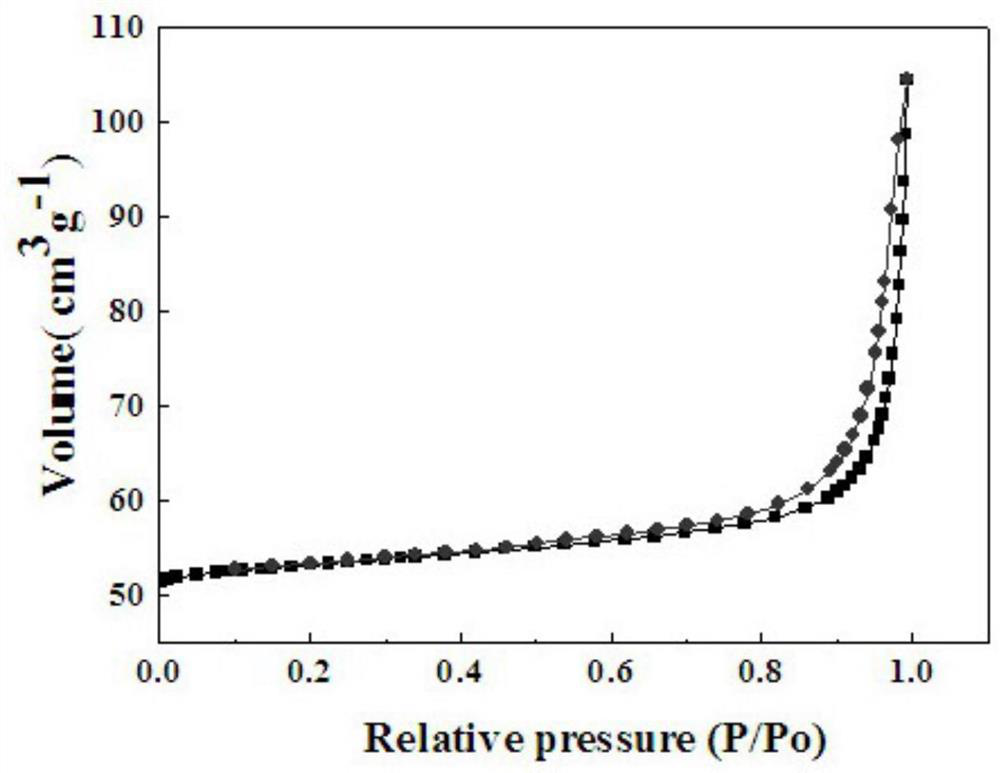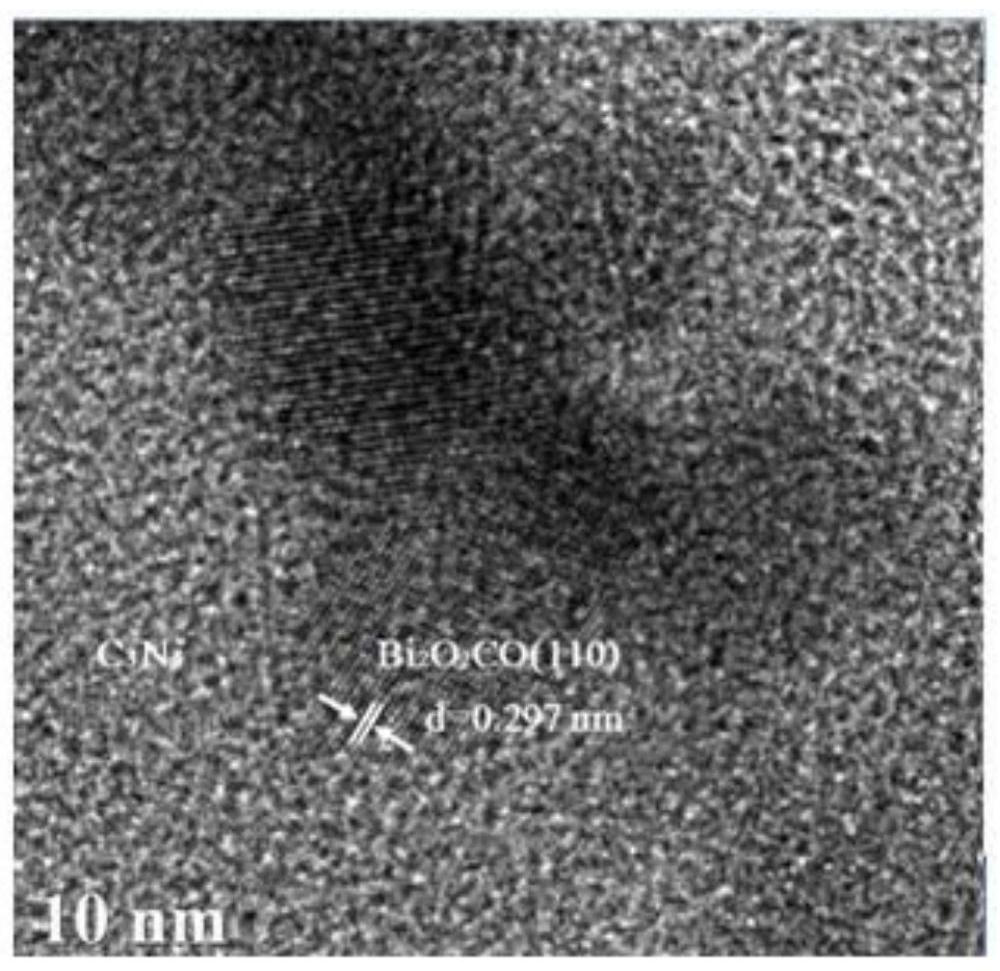Photocatalyst for treating dye in high-salinity wastewater, and preparation method thereof
A high-salt wastewater and photocatalyst technology, applied in the field of photocatalysis, can solve problems such as unsatisfactory dye treatment effects, achieve the effects of improving photocatalysis effects, good separation effects, and reducing operating costs
- Summary
- Abstract
- Description
- Claims
- Application Information
AI Technical Summary
Problems solved by technology
Method used
Image
Examples
Embodiment 1
[0035] Put melamine into a crucible with a lid, put it in a muffle furnace, raise the temperature to 400°C at a heating rate of 1°C / min, keep it for 100min, cool to room temperature, and obtain a yellow powder; then mix it with a certain amount of Mix with ionic water (the mass percentage of water is 99.5%), after ultrasonication at room temperature for 0.5h, pour it into a hydrothermal kettle, heat at 120°C for 6h, cool to room temperature and centrifuge, and put the obtained solid matter in an oven Dry at 40°C for 5 hours to obtain a khaki solid; then grind it with bismuth nitrate (molar ratio 1:4×10-4), put it into a crucible with a lid, and heat up at a heating rate of 1°C / min After keeping at 400° C. for 3 hours, it was cooled to room temperature to obtain a photocatalyst of bismuth oxycarbonate nanoparticles supported by porous graphite nitrogen carbide nanosheets.
[0036] Depend on figure 1 It can be seen that, through the detection of nitrogen adsorption-desorption t...
Embodiment 2
[0041] Put melamine into a crucible with a lid, place it in a muffle furnace, raise the temperature to 600°C at a rate of 5°C / min, keep it for 500min, then cool to room temperature to obtain a yellow powder; then mix it with a certain amount of Ionized water was mixed (the mass percentage of water was 98.5%), after being ultrasonicated for 3 hours at room temperature, poured into a hydrothermal kettle, heated at 240°C for 30 hours, cooled to room temperature and centrifuged, the obtained solid matter was placed in an oven for 100 Dry at ℃ for 30h to obtain a khaki solid; then grind it with bismuth nitrate (molar ratio: 1:4×10-2), put it into a crucible with a lid, and raise the temperature to 5°C / min at a heating rate of After keeping at 600° C. for 6 hours, it was cooled to room temperature to obtain a photocatalyst of bismuth oxycarbonate nanoparticles supported by porous graphite nitrogen carbide nanosheets.
[0042] Evaluation conditions: In 40 mg / L of methyl orange-contai...
Embodiment 3
[0044] Put melamine into a crucible with a lid, place it in a muffle furnace, raise the temperature to 530°C at a rate of 2.5°C / min, keep it for 200 minutes, and cool it to room temperature to obtain a yellow powder; then mix it with a certain amount of Mix with ionic water (the mass percentage of water is 99.0%), after ultrasonication at room temperature for 1h, pour it into a hydrothermal kettle, heat at 180°C for 12h, cool to room temperature and centrifuge, and put the obtained solid matter in an oven for 70 Dry at ℃ for 10 hours to obtain a khaki solid; then grind it with bismuth nitrate (molar ratio: 1:8×10-3), put it into a crucible with a lid, and raise the temperature to 2.5°C / min at a heating rate of After keeping at 500° C. for 4 hours, it was cooled to room temperature to obtain a photocatalyst of bismuth oxycarbonate nanoparticles supported by porous graphite nitrogen carbide nanosheets.
[0045] Evaluation conditions: In 20mg / L high-salt dye wastewater containing...
PUM
 Login to View More
Login to View More Abstract
Description
Claims
Application Information
 Login to View More
Login to View More - R&D
- Intellectual Property
- Life Sciences
- Materials
- Tech Scout
- Unparalleled Data Quality
- Higher Quality Content
- 60% Fewer Hallucinations
Browse by: Latest US Patents, China's latest patents, Technical Efficacy Thesaurus, Application Domain, Technology Topic, Popular Technical Reports.
© 2025 PatSnap. All rights reserved.Legal|Privacy policy|Modern Slavery Act Transparency Statement|Sitemap|About US| Contact US: help@patsnap.com


